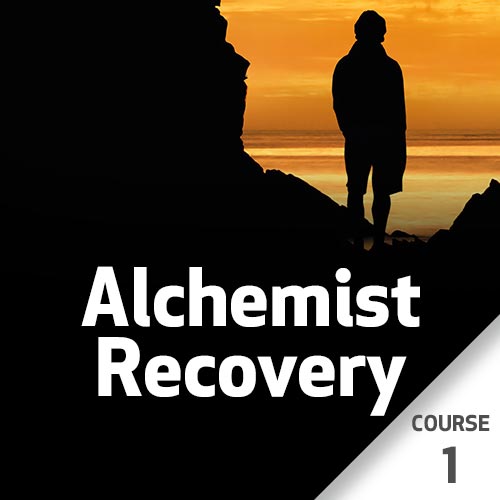Addiction Treatment in Chinese Medicine: What Gives Our Medicine an Advantage?
In the addiction treatment field, various modalities and professions compete (or collaborate) to offer solutions and answers. But what about Chinese Medicine? With thousands of years of holistic healing up our sleeve, are we really limited to one set of acupuncture points for treating addiction?
Short answer: No! Not that there’s anything “wrong” with popular point prescriptions. But as a Doctor of Chinese Medicine and addiction expert with more than two decades of experience, I prefer to use more of what our medicine has to offer.
Chinese Medicine is holistic and vast. Doctors and practitioners have been using it to treat the whole person—body, mind, spirit—since its beginnings. We certainly don’t have to limit ourselves to a single protocol or set of points.
I mean sure, we can practice that way. But doing so can mean missing out on what makes Chinese Medicine different and gives us a massive advantage in addiction treatment. This advantage is at once reflected and leveraged through our use of language. Here’s what I mean:
Every healing profession has its own vocabulary and specific way of explaining things. Most (especially those that aren’t holistic) deliver specialized treatment focusing on one aspect of the whole person.
While perhaps helpful, that compartmentalized approach leaves a lot out! Addiction is rooted in and affects all aspects of a person—mental, spiritual, emotional, and physical. In Chinese Medicine, we’ve got all four of these covered and treat them as an interconnected, indivisible whole.
In working with this whole, we can tailor our language to best support and honour the preferences and needs of our patients and clients. (Likely, they will pull towards one or maybe two of those four aspects.)
Why’s this matter? And why does success of addiction treatment hang in the balance?
Put simply: For addiction treatment to be successful, we need our client’s buy-in and full participation. If we’re not on the same page and speaking the same language, they will tune out, turn off, go through the motions, and leave. In that scenario (whether in Chinese Medicine or any other modality), treatment is not going to work.
What’s this look like in practice? All kinds of ways! Here are a few examples of how I apply this with patients and clients:
Mental: If a client pulls towards the mental, I introduce Yin-Yang, explaining basic concepts and how they relate to addiction. I also draw heavily on 5-Phase (Element) Theory, applying it to the Cycle of Addiction. Clients struggling to understand harmful, addictive cycles get this—you can see the “light bulbs” go off.
Spiritual: If a client pulls towards the spiritual, I meet them there. In Chinese Medicine, we address “spirit” using non-denominational, impersonal language. This is perfect for folks who resist religion or spirituality that’s entangled in ides of a monotheistic, judgmental, and wrathful God. Introducing the Tao and Chinese Medicine aspects of spirit may be the first time someone has been “given permission” to see things this way. Plus, it doesn’t have to be either/or. Taoism and the spirit in Chinese Medicine can work with and complement a client’s existing spirituality and belief system. What’s more, we’re able to draw on thousands of years of practice and precise terms (rather than default to ambiguous language without conveying much of anything).
Emotional: If a client pulls towards the emotional, we have a language around emotions that’s free of judgement and centres cause and effect. For example: It’s about “too much Anger” impacting the Liver and thus Spleen (not “me being angry”). This shifts our perspective away from “making the client the cause” (and doing damage, living with guilt and shame, feeling lousy, and wanting to drink or use more). Instead, they can see “the Anger” as separate and distinct. This more objective perspective on emotions offers space and breathing room to take healing actions and assume responsibility for consequences.
Physical: If a client pulls towards the physical, we have an advantage over “talk therapies” in that we get to touch, palpate, manipulate, and treat the physical body. This advantage is an obvious one, captured in the saying: “The issues are in the tissues.” Plus, when we relieve physical pain or discomfort, the “need” to numb out with addictive substances and behaviours diminishes or disappears.
These are just a few examples but offer a window into the vast potential—and advantage—of using Chinese Medicine to treat addiction.
By remembering and drawing on our wider lineage and tradition, we can treat addiction for what it is: a condition rooted in and affecting body-mind-sprit.
We can also honour our patient’s language and beliefs…and get their full participation. When it comes to addiction recovery, that participation is essential. Without it—whatever language, protocol, or technique you use—addiction treatment won’t bring successful, sustained outcomes.
Other Courses By This Teacher
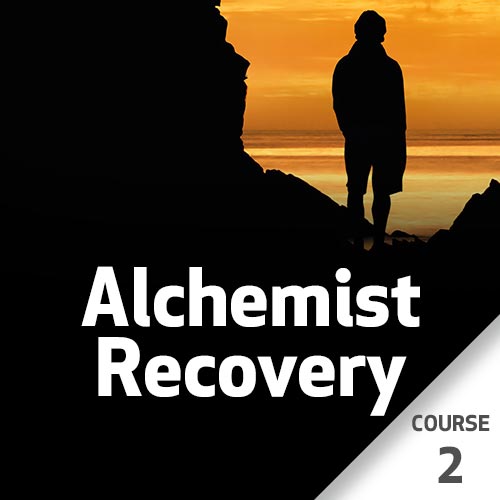

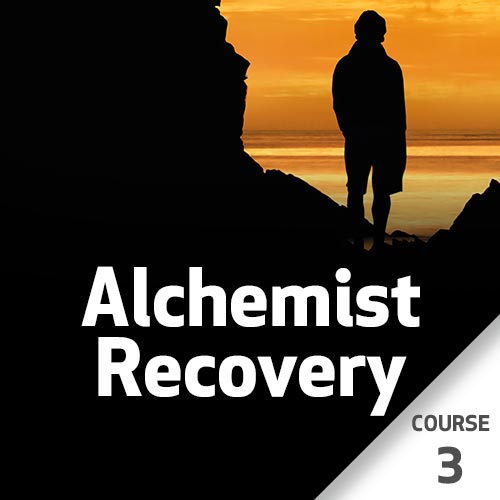

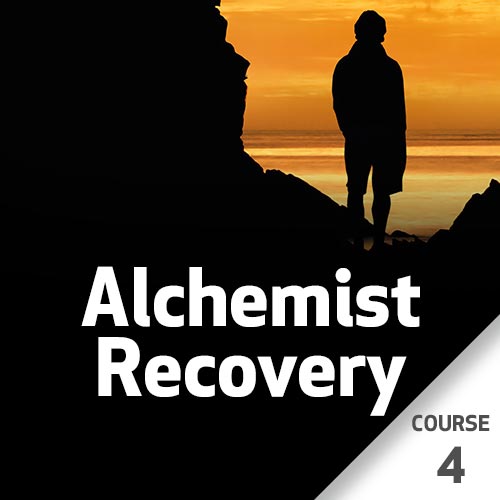

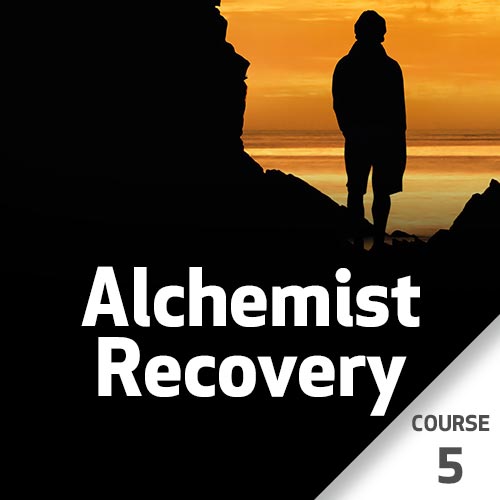

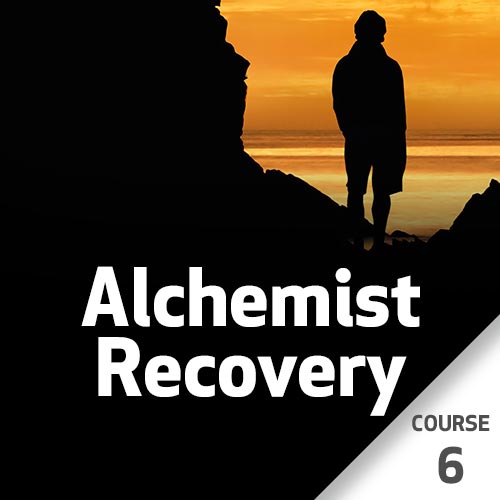

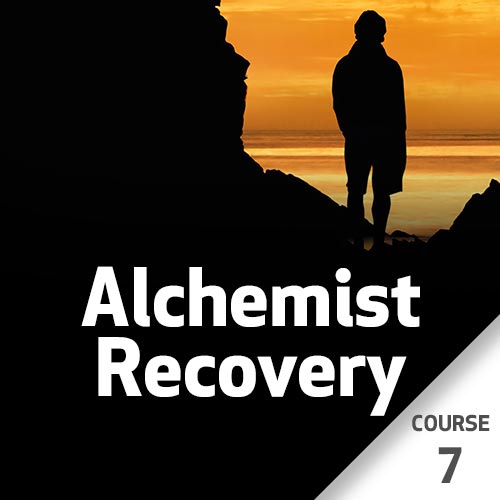

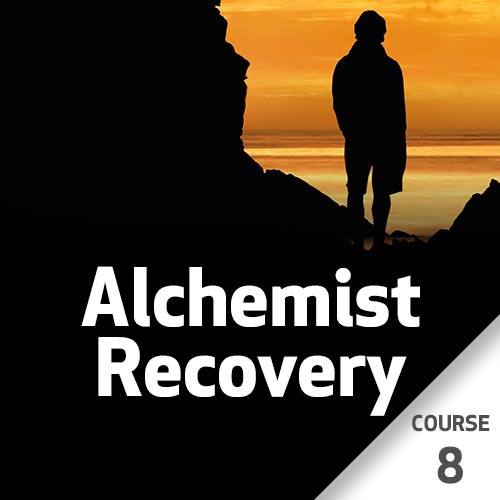

Overview
Course 2 contains Lessons 6-11 of the Alchemist Recovery Program. It builds upon the foundation laid down in Course 1 where we established clear definitions and an agreed upon language to use with our clients.
With this understanding, Course 2 digs into the roots and explores the deep, underlying causes for an addiction.
We follow this path:
Lesson 6: The 4 Stages of Recovery
Lesson 7: Belief - Where the Wound Is
Lesson 8: How Did I Get This Way?
Lesson 9: The Yin Yang of Addiction
Lesson 10: The Voice of TAHL - Your Limiting Core Belief
Lesson 11: Truth vs Lies
The work we perform here in Course 2 will not only reveal the underlying causes for one’s addiction but it will also explain how this occurs from a TCM perspective.
Learning Objectives
- Learn a TCM view of trauma
- Learn tools to immediately apply into practice
- Use Yin Yang theory to simply explain the characteristics and mechanisms that form the basis for an addiction
- Learn about the origins of addiction
Your Teacher

Randal Lyons
Randal Lyons has helped himself, and thousands of others, achieve sobriety using TCM for the past 27 years. He uses an online program to collaborate with TCM practitioners, medical & mental health professionals and businesses that need support for those struggling with addiction.
Categories
Tags
Alchemist Recovery - Course 3
The Cycle of Addiction - Using the Chinese 5 Elements to Chart, Understand and Treat Addictions
with Randal Lyons
See In StoreOverview
The Cycle of Addiction is built to perpetuate itself. This makes it a powerful truth-but also a predictable one-which we use to our advantage to understand, predict, explain, and dismantle it. We do this in Course 3 by diving into Alchemist Recovery’s Lessons 12 through 16.
They are:
Lesson 12: The Chinese 5 Element System - Understanding the Cycles of Life,
Lesson 13: The Cycle of Manifestation - Your Two Choices
Lesson, 14: Addiction and The Magic Moment
Lesson, 15: The Cycle of Addiction - A Step-by-Step Breakdown,
Lesson 16: The Story of the Two Wolves.
As with all of the Lessons, you will be supplied with a PDF, three videos, two experiential exercises, a Checklist and the Alchemist’s Notebook, for more resources.
Learning Objectives
- Utilize reliable, tested and proven methods for effective treatment.
- Receive a clear model to explain the Cycle of Addiction.
- Learn tools to disrupt the Cycle.
Your Teacher

Randal Lyons
Randal Lyons has helped himself, and thousands of others, achieve sobriety using TCM for the past 27 years. He uses an online program to collaborate with TCM practitioners, medical & mental health professionals and businesses that need support for those struggling with addiction.
Categories
Tags
Alchemist Recovery - Course 4
Fear, Beliefs, Dreams & the Power of Zhi
with Randal Lyons
See In StoreOverview
This online course is part of a comprehensive program, which provides a clear, holistic treatment model for addictions using TCM. This segment is Course 4 of 10 and contains Lessons 17-21 of the 52 Lesson program. Each Lesson is comprised of an engaging PDF workbook, three videos, two audios with experiential exercises, a client summary and notes for the practitioner.
In this Course we explore Water’s role in the Cycle of Addiction. Specifically with regards to how Fear, beliefs, dreams and how the power of one’s Zhi can plant the seeds for an addiction to manifest into their life.
Here’s what you’ll get:
Lesson 17: Belief vs Reality - Which is Stronger?
Lesson 18: The Power of Surrender
Lesson 19: The Lake of Fear
Lesson 20: The Power of Dreams
Lesson 21: A Shamanic View of Illness
As with all of the Courses in the Alchemist Recovery Program, you'll be guided step-by-step in holistic ways to treat addiction. You will be able to put these methods immediately into practice, integrate them with your own personal protocols and offer them to your clients - either as a way to enhance your private and group sessions or to keep them engaged between office visits.
Learning Objectives
- Recieve ways to change a client's unhealthy perceptions
- Learn to address a client's Fear in a safe and compassionate way
- Learn to treat an addiction at its roots and to explain this approach to your client
Your Teacher

Randal Lyons
Randal Lyons has helped himself, and thousands of others, achieve sobriety using TCM for the past 27 years. He uses an online program to collaborate with TCM practitioners, medical & mental health professionals and businesses that need support for those struggling with addiction.
Categories
Tags
Alchemist Recovery - Course 5
The Planning Phase, Anger, Stagnation & Movement as Medicine
with Randal Lyons
See In StoreOverview
This online course is part of a comprehensive program, which provides a clear, holistic treatment model for addictions using TCM. This segment is Course 5 of 10 and contains Lessons 22-26 of the 52 Lesson program. Each Lesson is comprised of an engaging PDF workbook, three videos, two audios with experiential exercises, a client summary and notes for the practitioner.
In this Course we explore Wood’s role in the Cycle of Addiction. Specifically how movement, creativity, Qi Gong and the transformation of Anger can help our clients.
Here’s what you’ll get:
1) Lesson 22: Movement is the Medicine
2) Lesson 23: Qi: Hold the Ball
3) Lesson 24: Belief vs Desire
4) Lesson 25: Discipline vs Creativity
5) Lesson 26: The Power of No!
As with all of the Courses in the Alchemist Recovery Program, you'll be guided step-by-step in holistic ways to treat addiction. You will be able to put these concepts immediately into practice, integrate them with your own personal methods and offer them to your clients - either as a way to enhance your private and group sessions or to keep them engaged between office visits.
Learning Objectives
- Teach your clients how to establish clear boundaries with Qi Gong.
- Incorporate exercises to foster a client's creativity into treatment.
- Learn new ways to relieve Stagnation.
Your Teacher

Randal Lyons
Randal Lyons has helped himself, and thousands of others, achieve sobriety using TCM for the past 27 years. He uses an online program to collaborate with TCM practitioners, medical & mental health professionals and businesses that need support for those struggling with addiction.
Categories
Tags
Alchemist Recovery - Course 6
The Acquisition Phase, Desires, Needs & Rolling the Dice
with Randal Lyons
See In StoreOverview
This online course is part of a comprehensive program, which provides a clear, holistic treatment model for addictions using TCM. This segment is Course 6 of 10 and contains Lessons 27-31 of the 52 Lesson program. Each Lesson is comprised of an engaging PDF workbook, three videos, two audios with experiential exercises, a client summary and notes for the practitioner.
In this Course we explore Fire’s role in the Cycle of Addiction. Specifically how the Heart’s true passion can be discovered, or rediscovered, to bring meaning and Joy into your client’s life.
Here’s what you’ll get:
1) Lesson 27: The Fire of Desire
2) Lesson 28: Went for It!
3) Lesson 29: The Hero’s Journey
4) Lesson 30: Soul Courting (Part 1)
5) Lesson 31: Soul Courting (Part 2)
As with all of the Courses in the Alchemist Recovery Program, you'll be guided step-by-step in holistic ways to treat addiction. You will be able to put these concepts immediately into practice, integrate them with your own personal methods and offer them to your clients - either as a way to enhance your private and group sessions or to keep them engaged between office visits.
Learning Objectives
- Learn ways to remove what has been blocking the Heart's Joy.
- Refocus a client's Fire away from the acquisition of the drug of choice back towards their own Heart.
- Incorporate ways to rekindle a client's Fire.
Your Teacher

Randal Lyons
Randal Lyons has helped himself, and thousands of others, achieve sobriety using TCM for the past 27 years. He uses an online program to collaborate with TCM practitioners, medical & mental health professionals and businesses that need support for those struggling with addiction.
Categories
Tags
Alchemist Recovery - Course 7
The Using Phase, Home, Rituals & The Divine Feminine
with Randal Lyons
See In StoreOverview
This online course is part of a comprehensive program, which provides a clear, holistic treatment model for addictions using TCM. This segment is Course 7 of 10 and contains Lessons 32-36 of the 52 Lesson program. Each Lesson is comprised of an engaging PDF workbook, three videos, two audios with experiential exercises, a client summary and notes for the practitioner.
In this Course we explore Earth’s role in the Cycle of Addiction. Specifically we examine how the Yi and Worry are influenced by one’s perception of a Divine Feminine, Home, Nurturance and the common addiction problem of Substitution.
Here’s what you’ll get:
Lesson 32: The Divine Feminine.
Lesson 33: Communion - Part 1
Lesson 34: The Perfect Home
Lesson 35: Communion - Part 2
Lesson 36: The Story of the Two Brothers*
As with all of the Courses in the Alchemist Recovery Program, you'll be guided step-by-step in holistic ways to treat addiction. You will be able to put these concepts immediately into practice, integrate them with your own personal methods and offer them to your clients - either as a way to enhance your private and group sessions or to keep them engaged between office visits.
* Bonus: Lesson 36 and The Story of the Two Brothers is part of the Metal Element and provides an introduction into Course 8 of the Program.
Learning Objectives
- Offer clients new Awareness about what they are really getting from their drug of choice.
- Clarify your client's perception of what they have choice and responsibility over within their addiction, as well as your treatments together.
- Learn ways to bring more safety, trust and nurturance into a client's life.
Your Teacher

Randal Lyons
Randal Lyons has helped himself, and thousands of others, achieve sobriety using TCM for the past 27 years. He uses an online program to collaborate with TCM practitioners, medical & mental health professionals and businesses that need support for those struggling with addiction.
Categories
Tags
Alchemist Recovery - Course 8
The Consequences Phase, Grief, Forgiveness & Healing through Release
with Randal Lyons
See In StoreOverview
This online course is part of a comprehensive program, which provides a clear, holistic treatment model for addictions using TCM. This segment is Course 8 of 10 and contains Lessons 37-41 of the 52 Lesson program. Each Lesson is comprised of an engaging PDF workbook, three videos, two audios with experiential exercises, a client summary and notes for the practitioner.
In this Course we explore Metal’s role in the Cycle of Addiction. Specifically we examine how Grief is a powerful emotion that influences one’s perceptions of forgiveness, expression and all of their attachments.
Here’s what you’ll get:
1) Lesson 37: Addicted to Your Story
2) Lesson 38: Forgiveness - Part 1
3) Lesson 39: Forgiveness - Part 2
4) Lesson 40: The Well of Grief
5) Lesson 41: What’s Your Capacity?
As with all of the Courses in the Alchemist Recovery Program, you'll be guided step-by-step in holistic ways to treat addiction. You will be able to put these concepts immediately into practice, integrate them with your own personal methods and offer them to your clients - either as a way to enhance your private and group sessions or to keep them engaged between office visits.
Learning Objectives
- Teach clients to bring compassion and healing to old wounds and traumas.
- Clarify your client's perception of what they have choice and responsibility over with regard to Grief and forgiving old trespassers.
- Offer clients new ways of releasing old patterns.
Your Teacher

Randal Lyons
Randal Lyons has helped himself, and thousands of others, achieve sobriety using TCM for the past 27 years. He uses an online program to collaborate with TCM practitioners, medical & mental health professionals and businesses that need support for those struggling with addiction.
